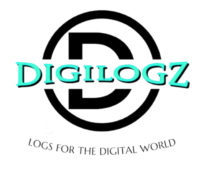In an age where digital marketing continuously evolves, and consumers are faced with an overwhelming amount of content, standing out from the crowd and capturing audience attention has become more challenging than ever. One proven way to create meaningful connections with your audience and differentiate yourself from competitors is through the power of brand storytelling. As a fundamental aspect of human communication, storytelling has the unique ability to evoke emotions, convey values, and ignite the imagination. When leveraged effectively in digital marketing, it can create a lasting connection between your brand and your audience, driving engagement and fostering long-term loyalty. In this comprehensive guide, we will delve into the world of brand storytelling and provide actionable insights and best practices to help you craft captivating narratives that enrich your digital marketing efforts, amplify your brand identity, and elevate your business for lasting success.
Brand storytelling goes beyond merely promoting your products or services. Instead, it focuses on sharing your brand’s journey, values, and mission through engaging narratives that resonate on a deeper level with your audience. By crafting authentic stories and showcasing them through diverse channels, such as your website, social media, email marketing campaigns, and other content marketing initiatives, you can reinforce your brand identity, create a memorable experience, and build trust with your target audience.
In this guide, we will discuss essential elements of successful brand storytelling, explore various narrative structures and styles, and provide practical tips for incorporating storytelling techniques into your existing digital marketing efforts. Additionally, we will share inspiring examples of effective brand storytelling from industry leaders, and offer insights on how to measure the impact of your storytelling initiatives on your overall marketing performance.
The Essential Elements of Successful Brand Storytelling
A captivating brand story can evoke emotions, reinforce values, and create a lasting connection with your audience. In this section, we will explore the essential elements needed for weaving an engaging and impactful brand narrative.
1. Authenticity: Authenticity lies at the heart of successful brand storytelling. Ensure your stories reflect your brand’s true values, mission, and personality, fostering credibility and trust among your audience.
2. Emotion: Emotion is a powerful force that can drive audience engagement, brand loyalty, and conversions. Infuse your narratives with emotion, eliciting feelings such as happiness, hope, inspiration, or empathy to establish a more profound connection with your audience.
3. Relatability: Create stories that resonate on a personal level with your audience, focusing on their needs, aspirations, and pain points. Relatable narratives foster a sense of understanding and affinity, making your brand more appealing to your target market.
4. Conflict and Resolution: An engaging story typically presents a challenge or conflict, followed by a resolution that demonstrates your brand’s role in overcoming this obstacle. Incorporate elements of conflict and resolution into your stories to showcase your brand’s problem-solving abilities and generate interest.
Exploring Narrative Structures and Styles
Creating a compelling brand story involves choosing the right narrative structure and style that aligns with your brand voice, audience, and marketing goals. In this section, we will explore different narrative structures and styles commonly used in brand storytelling.
1. The Hero’s Journey: This classic storytelling structure involves a hero embarking on an adventure, facing challenges, and emerging triumphant. Adapt the hero’s journey to showcase your brand as an ally, guiding your audience through their journey toward success.
2. Testimonials and Case Studies: Share real-life stories of satisfied customers or successful partnerships that showcase your brand’s positive impact on their lives and businesses.
3. Behind-the-Scenes Stories: Provide a glimpse into the inner workings of your company, such as your company’s founding story, employee experiences, or your approach to product development and innovation.
4. Educational Narratives: Share insights and experiences that educate and inform your audience, positioning your brand as an authority and thought leader in your industry.
Incorporating Storytelling Techniques into Your Digital Marketing Efforts
After establishing the essential elements of your brand story and choosing an appropriate narrative structure and style, it’s time to integrate storytelling into your digital marketing initiatives. In this section, we discuss practical ways to incorporate brand storytelling across different channels and content formats.
1. Website Content: Share your brand story on your website through creative copywriting and visuals on your “About Us” and “Our Mission” pages. Consider using multimedia formats such as videos or infographics to create a compelling, immersive experience.
2. Social Media: Leverage social media platforms to share bite-sized stories that resonate with your target audience. Use interactive social media features such as Instagram Stories, Facebook Live, or Twitter threads to share engaging, authentic narratives.
3. Email Marketing: Enhance your email campaigns with storytelling elements, such as personal anecdotes, success stories, or customer testimonials. Use subject lines and email headers that pique curiosity and promise a compelling narrative to boost open rates and engagement.
4. Content Marketing: Craft engaging blog posts, whitepapers, and videos that tell your brand story while providing value to your audience. Focus on producing content that is both informative and entertaining, weaving your brand narrative into educational and thought-provoking pieces.
Measuring the Impact of Brand Storytelling on Your Marketing Performance
To assess the effectiveness of your brand storytelling efforts, it’s crucial to consistently measure its impact on your overall marketing performance. This section outlines the importance of monitoring essential metrics and adjusting your storytelling initiatives accordingly.
1. Set Objectives and KPIs: Clearly define your storytelling goals and select key performance indicators (KPIs) that align with these objectives. Common KPIs to track may include engagement, conversion rates, and brand sentiment.
2. Monitor Metrics: Utilize analytics tools like Google Analytics, social media insights, and email campaign performance reports to track and analyze data related to your storytelling initiatives.
3. Adjust Based on Data: Evaluate your brand storytelling efforts, identify areas for improvement, and adjust your strategy based on data-driven insights.
Conclusion
Crafting authentic, engaging, and impactful brand stories is an integral part of successful digital marketing strategy, enabling you to connect with your audience on a deeper level and differentiate your brand from competitors. By focusing on the essential elements of successful brand storytelling, exploring various narrative structures and styles, and incorporating storytelling techniques into your digital marketing efforts, you can enhance your brand identity, elevate your marketing initiatives, and foster long-lasting audience loyalty. Embrace the art of storytelling and take your digital marketing to new heights by creating captivating narratives that engage and inspire your audience, setting the stage for your brand’s continued success.



